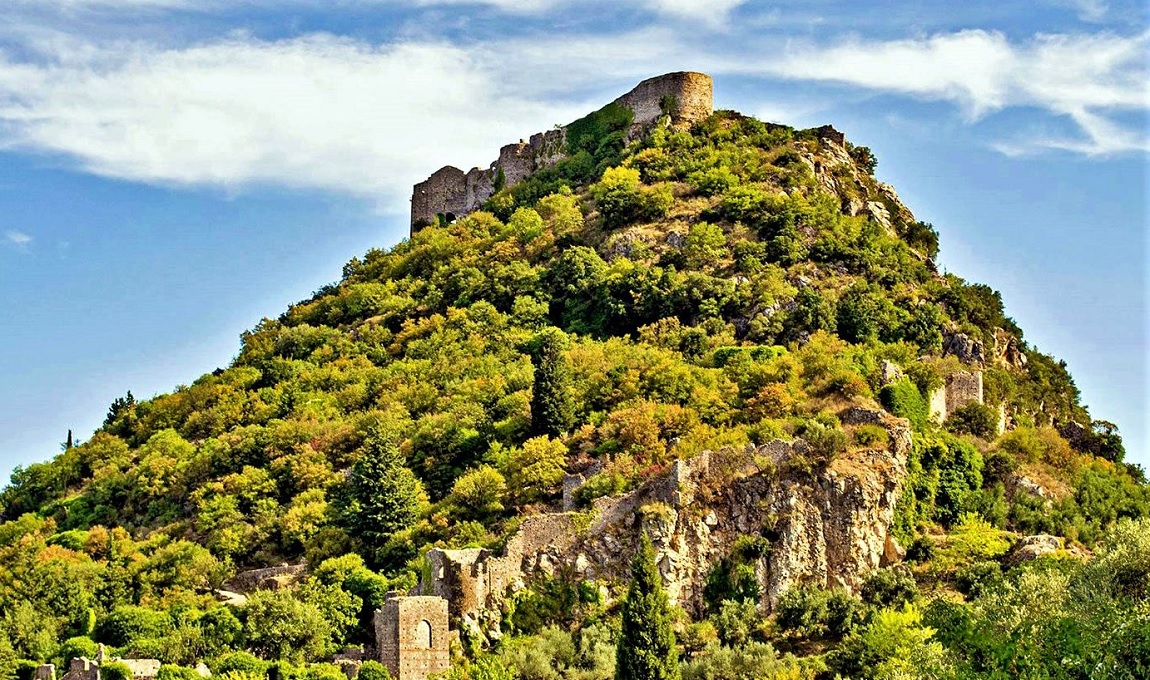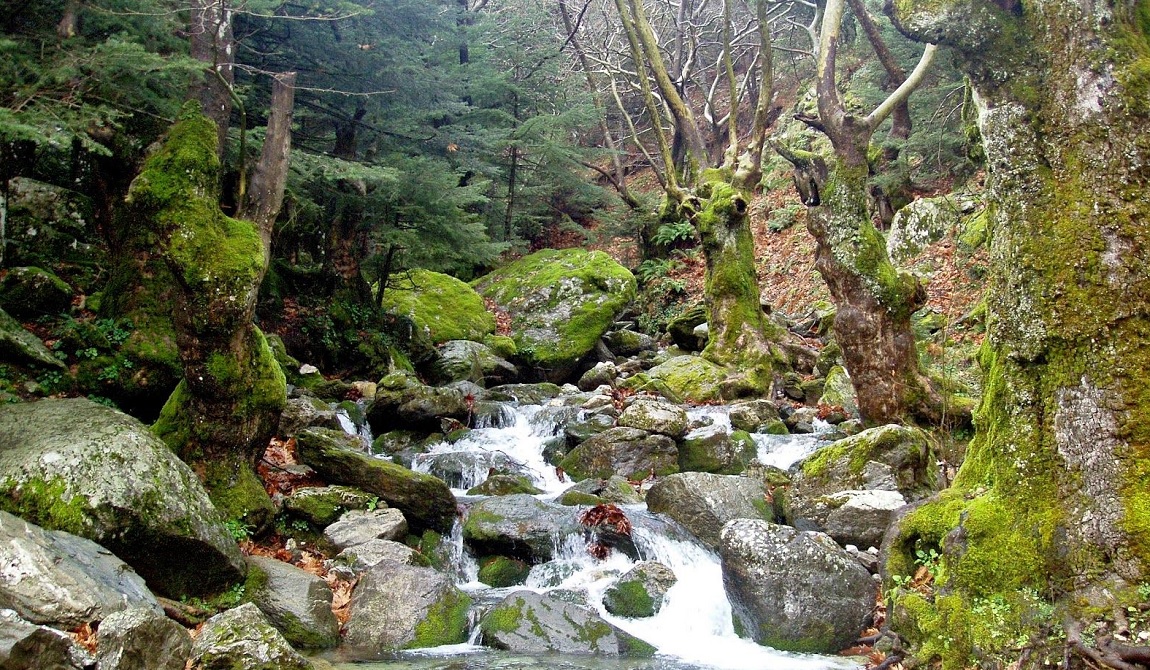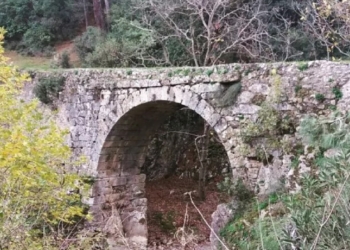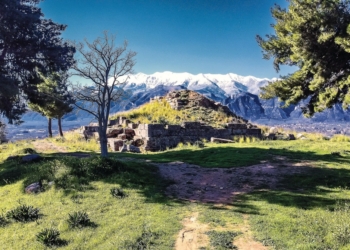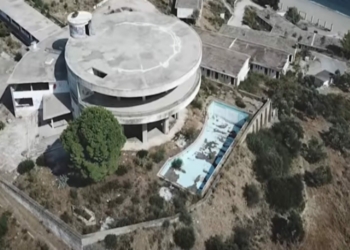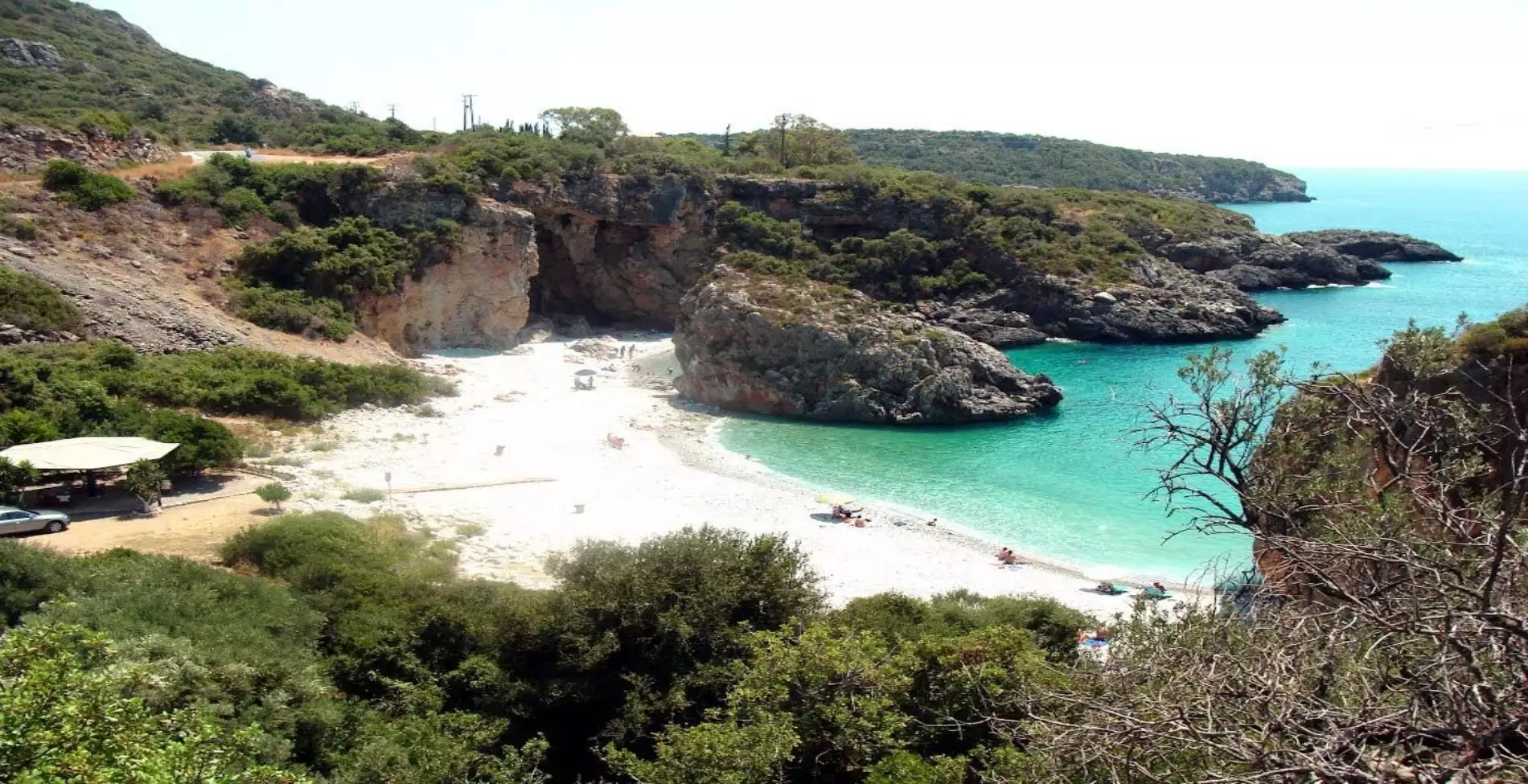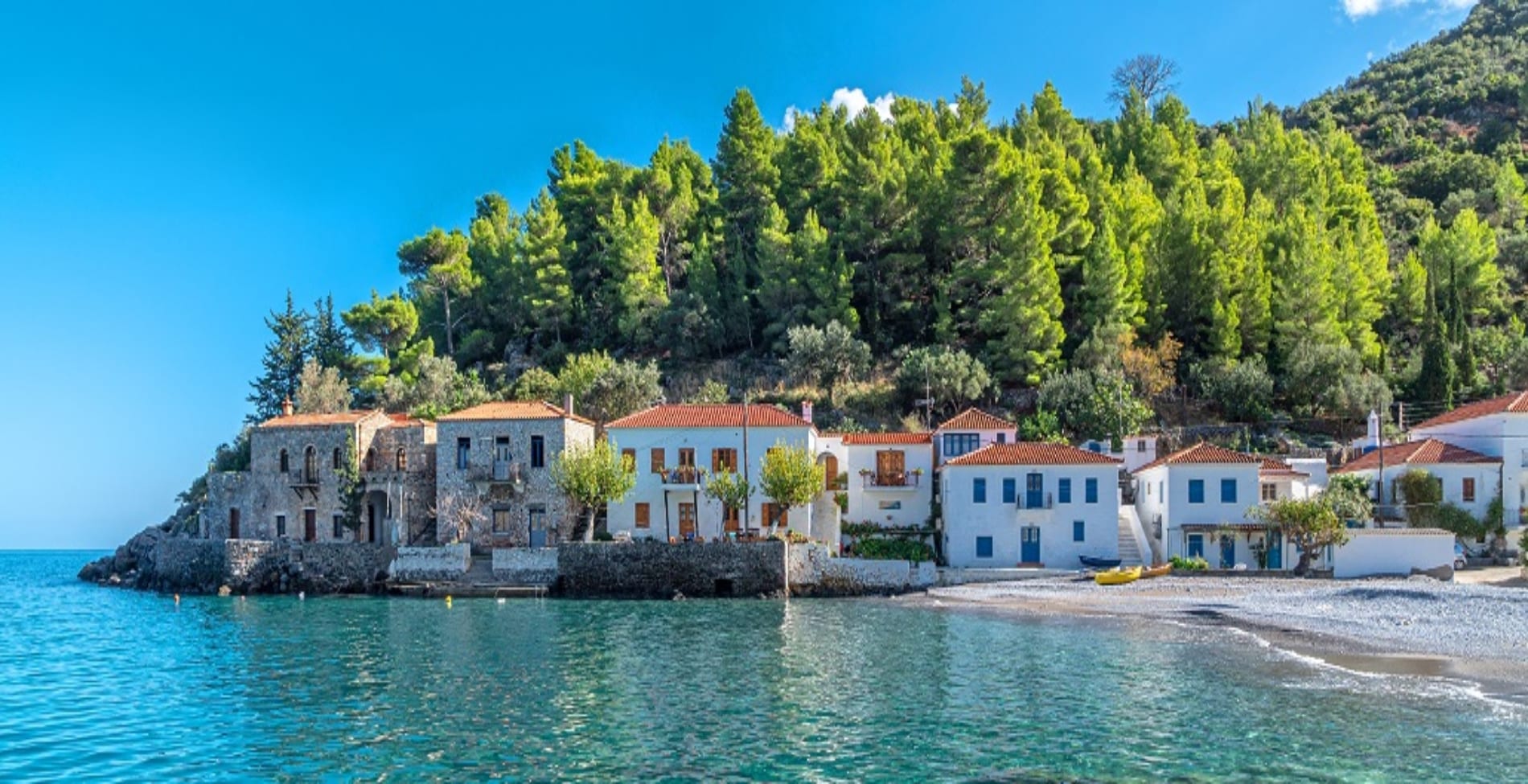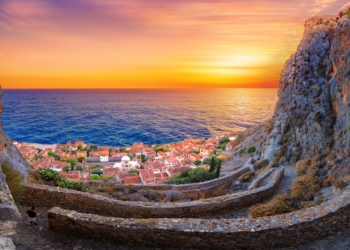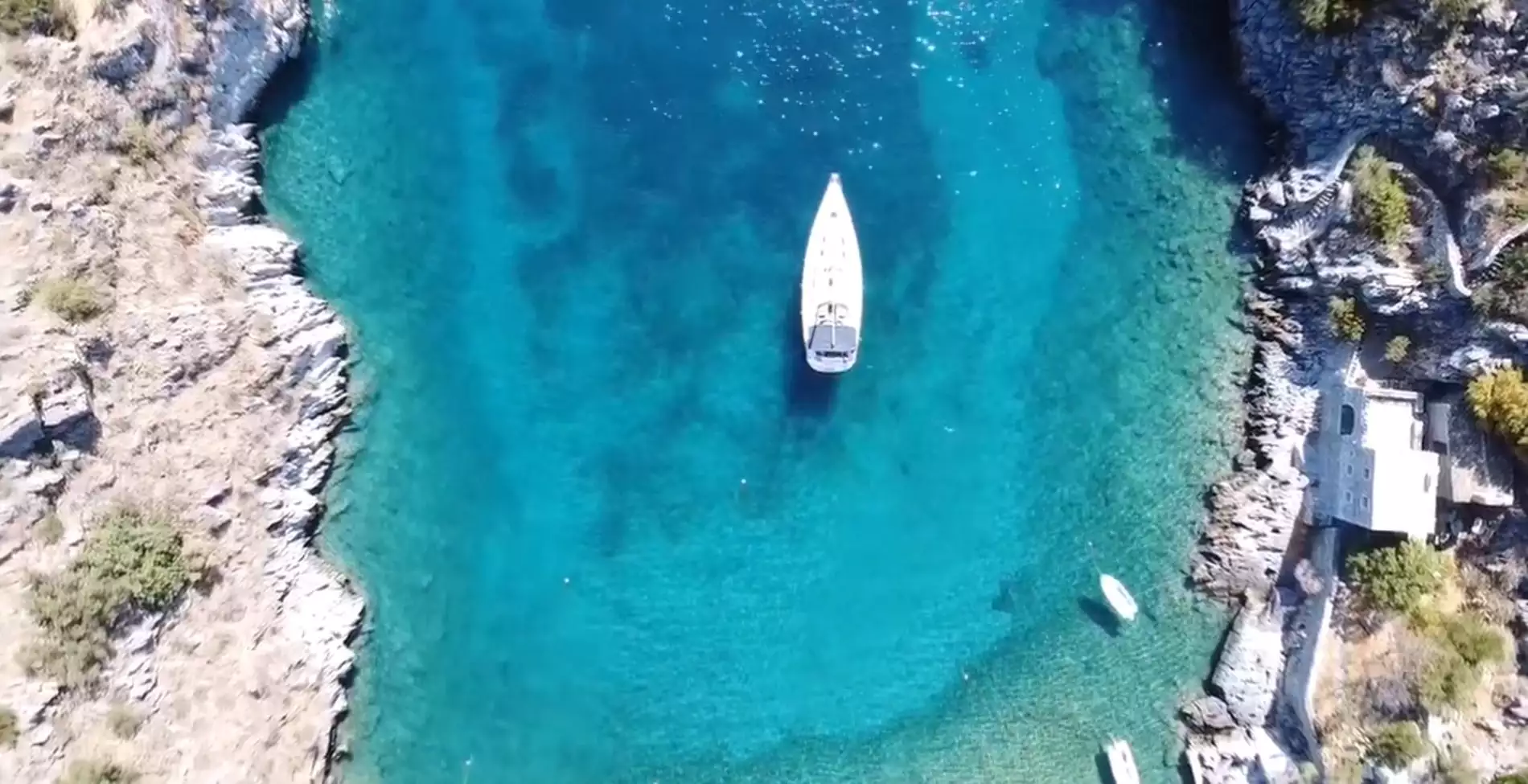The low mountain of Mystras, or Myzithra as the “Chronicle of Morea” calls it, may seem unimportant from a distance, compared to the towering Mount Taygetos behind it, which reaches 2,405 meters high. But as you approach it by car, you start to appreciate its strategic value. You can spot the walls that separate the slope into different zones, the charming churches that dot the landscape, and the splendid Palace where the despot of Mystras, ruled over Moreas in the Byzantine era. At the top of it all, on the flat summit, the stone castle stands proud. The mountain has steep slopes on its south and southeast sides, which makes it easier to defend. Only when you see it up close do you realize how invincible and desirable the Castle City of Mystras was for anyone who possessed it!
Mystras: 2.5 hours drive from Athens
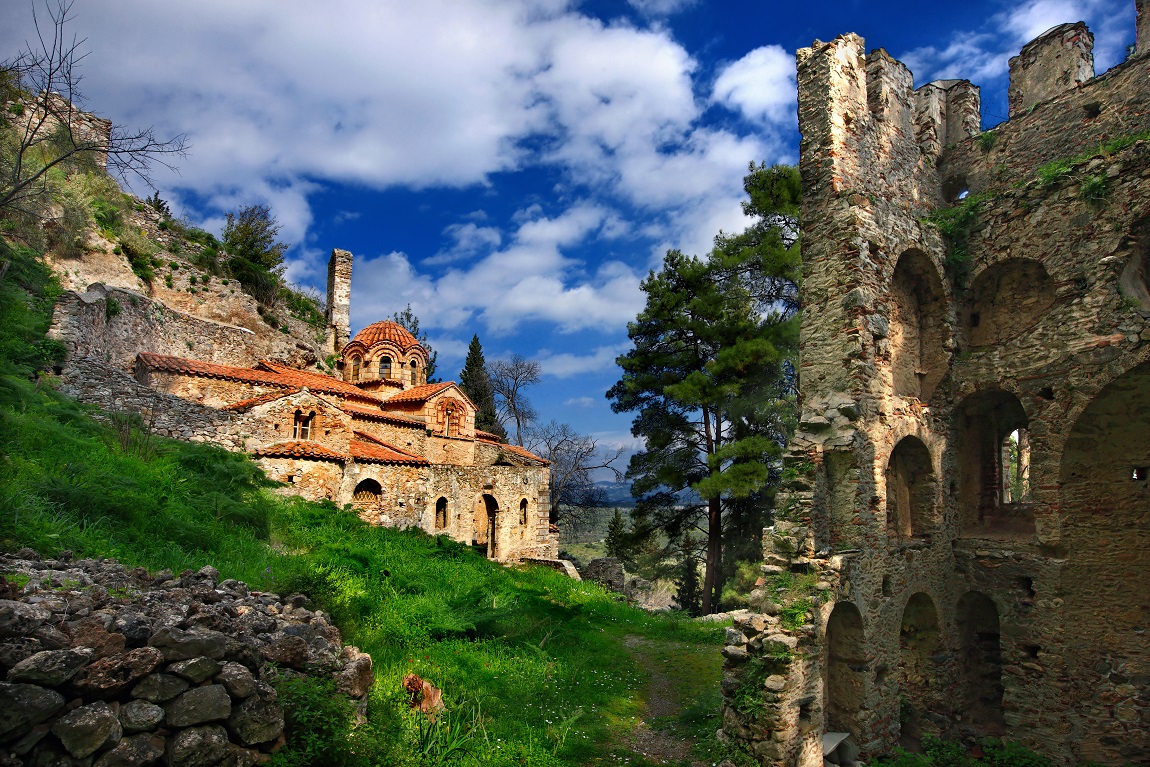
You can easily reach the base of the mountain by car from Athens in just 2.5 hours, covering a distance of 241 kilometers. Most of the journey is on the motorway, so you can enjoy a smooth and comfortable ride. After joining the national road Athens – Corinth, you will soon arrive at the Isthmus, the narrow land bridge that connects the Peloponnese with mainland Greece. From there, you will continue past Corinth and follow the signs to Tripoli, turning left at the junction where the road splits towards Patras.

You will continue your journey on the national road Korinthos – Tripoli, enjoying the scenic views of the Peloponnese countryside. At the junction near Tripoli, you will take the direction to Kalamata, joining the national road Tripoli – Kalamata (A71). You are getting closer to your destination as you reach Sparta, the ancient city of the Spartans. From there, you only have 5 km left to Mystras, as the signs indicate. It is a wonderful place that draws thousands of visitors every year.
A bit of history about Mystras
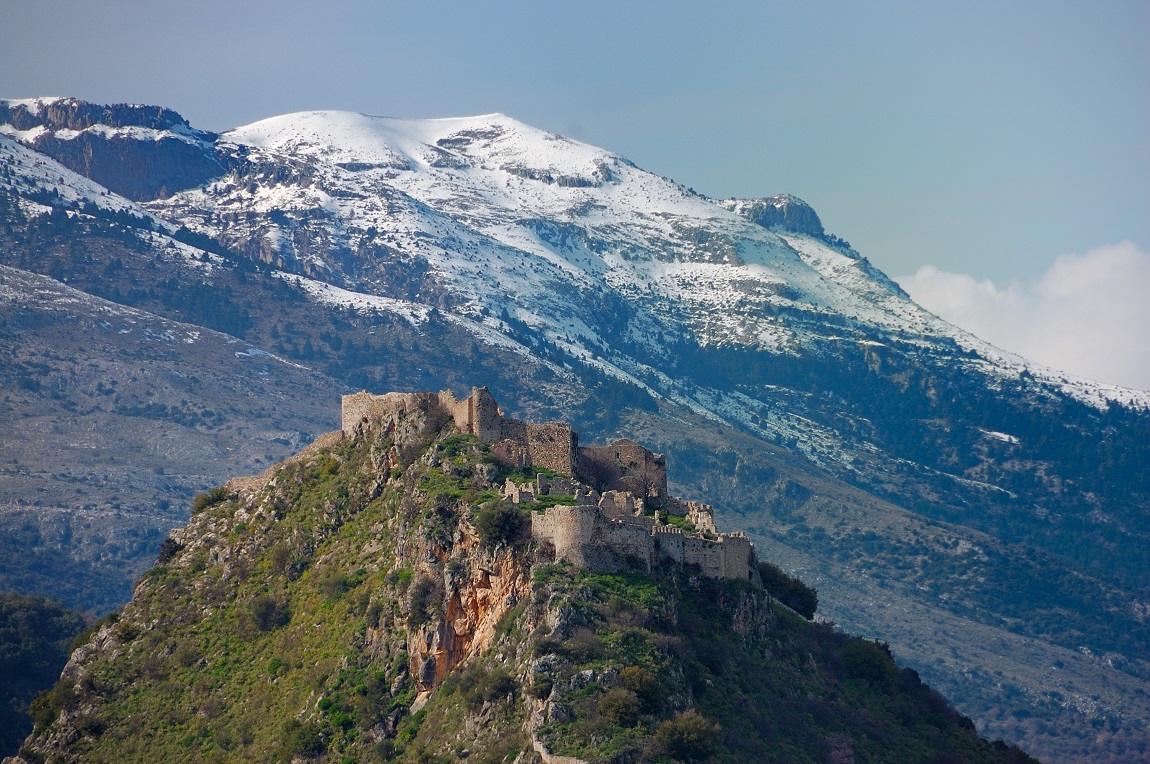
Before you step into the medieval castle city of Mystras, it is useful to learn some of its history, so you can appreciate the significance of the site, which has been recognized as a cultural property by UNESCO World Heritage Sites since 1989. The state was founded in the aftermath of the first fall of Constantinople when the Western Crusaders captured the Byzantine capital in 1204.
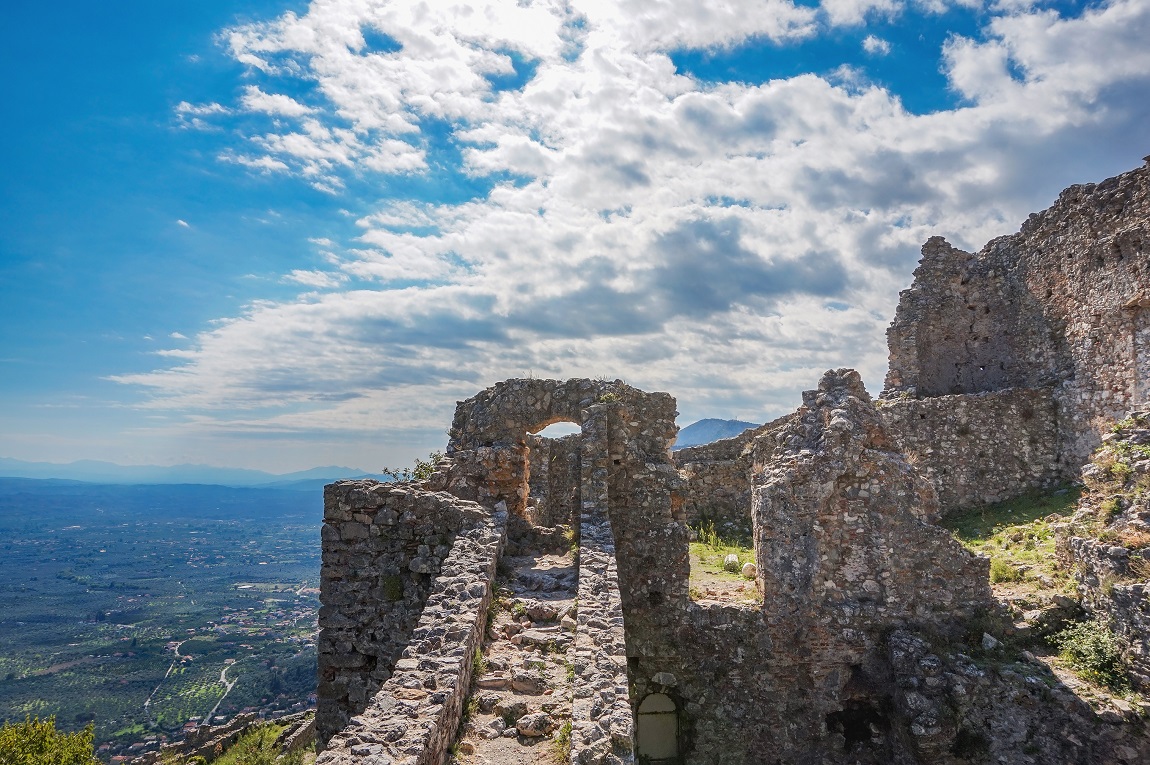
The Byzantine Empire was shattered, and the Peloponnese was given to the Frankish family of Villehardouins, who established the Principality of Achaia. A few years later, in 1249, the Frankish prince William II erected the castle of Myzithras on the summit of the same-named hill. This fortification will become the nucleus of the future castle city.
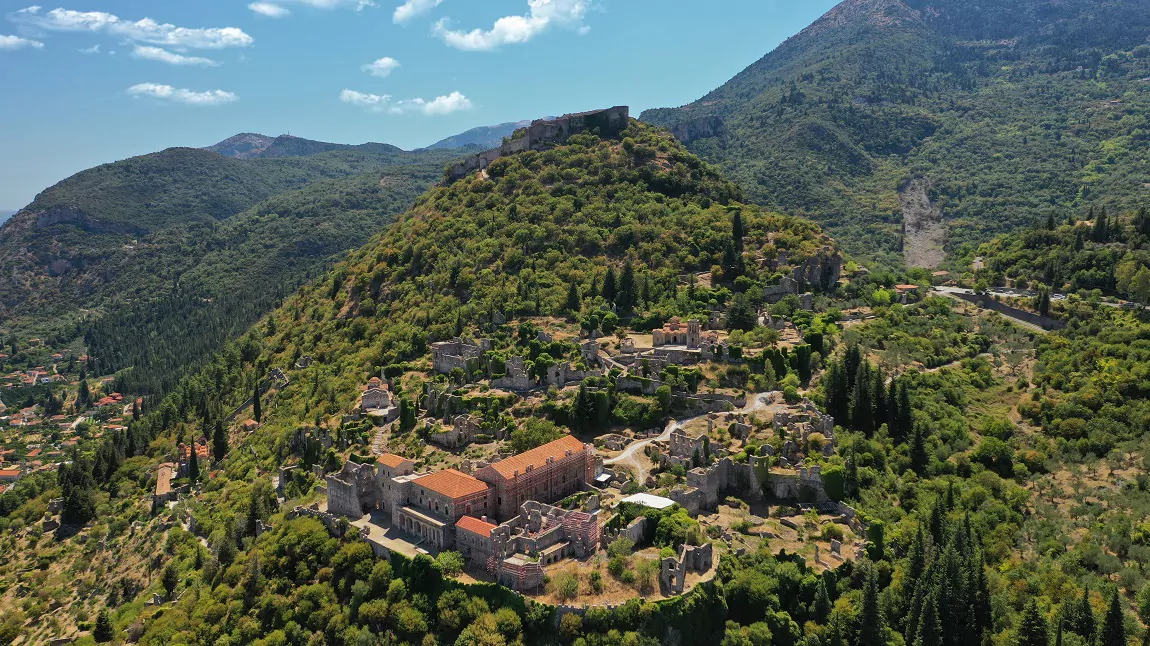
The prince was captured by the Byzantines in the battle of Pelagonia in 1259. The Byzantine emperor demanded, among other things, the surrender of the castle of Myzithras as a ransom for his release, which was done. In 1289 the governor of the Byzantine territories of the Peloponnese transferred his seat there and in 1349 Mystras became the capital of the semi-independent Despotate of Morea. It fell into the hands of the Ottomans in 1460, and Mystras became one of the most prominent silk production and trade hubs of the eastern Mediterranean.
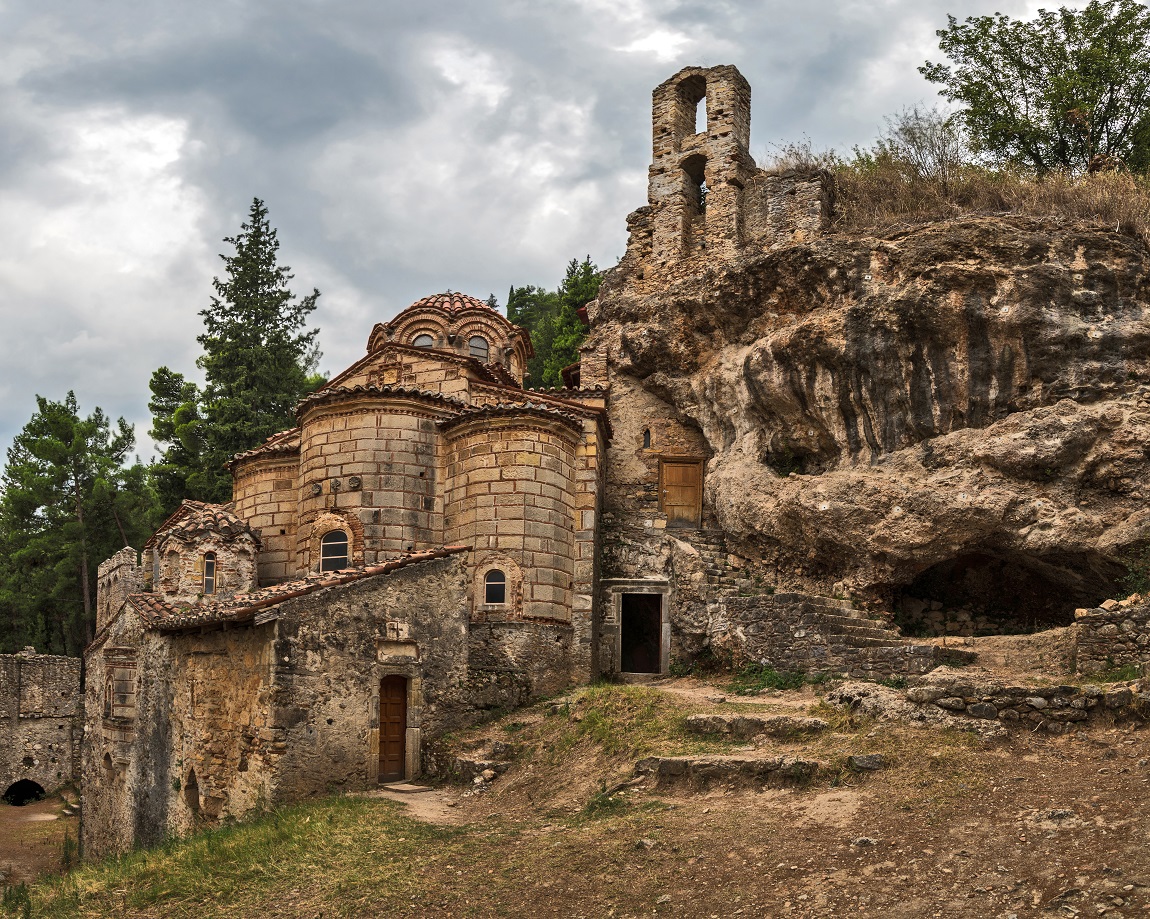
Its decline started in 1770 after it was devastated by Turk-Albanians in the aftermath of the Orlov uprising. With the founding of modern Sparta by King Otto in 1834, the population began to move from Mystras to the new city. The last residents left the castle city in 1953 after the site was acquired by the Greek state.
Mystras: Entering the monumental site
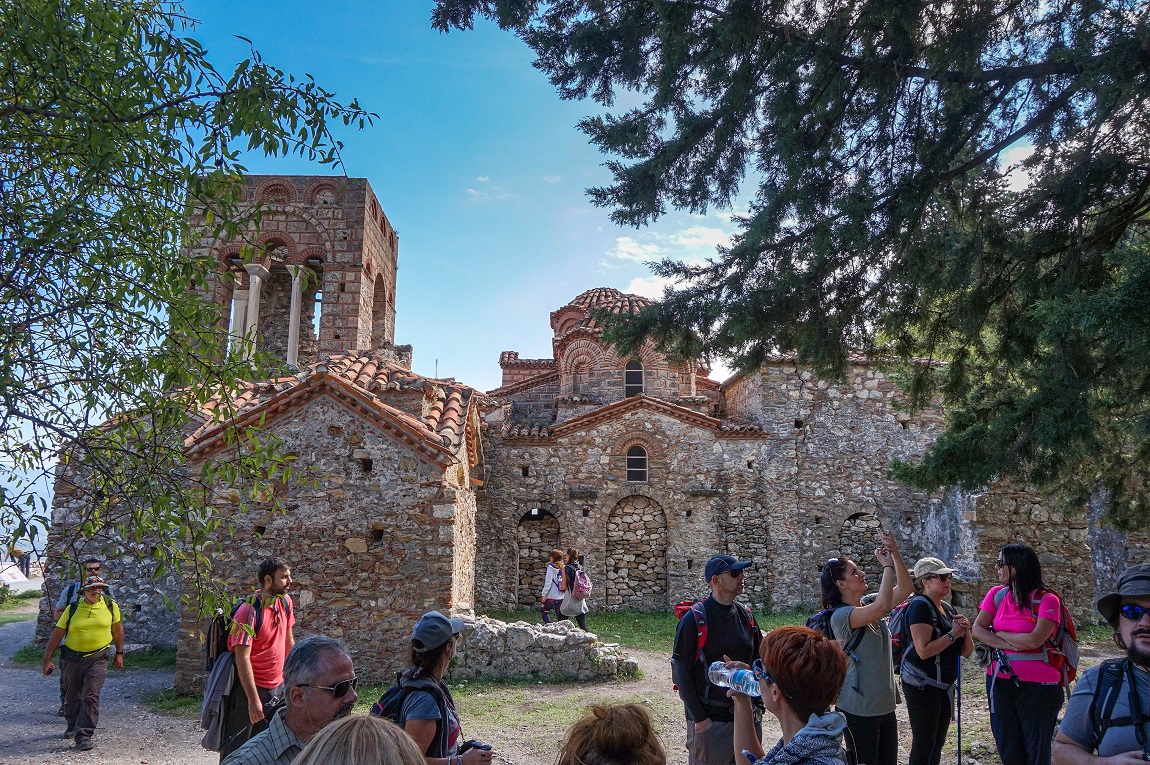
You can enter the castle city through two different gates. One takes you to Pano Chora, the area where the people of the nearby plain moved and settled in the mid-13th century to have more security. There you can also find the Palace of Palaiologos (or Palace of the Despots, where the despot was usually a son or brother of the Byzantine emperor).

The other entrance takes you to the inside of Kato Chora, which was built later and was also fortified. Most people prefer to drive to the gate of Kato Chora and after exploring this part of the state, go back to their car and drive to Pikoulianika and the gate of Pano Chora. From there, with the same ticket of 12 euros (student-reduced ticket is 6 euros), they can access the Palace and the fortress.
Mystras: The seven resplendent temples
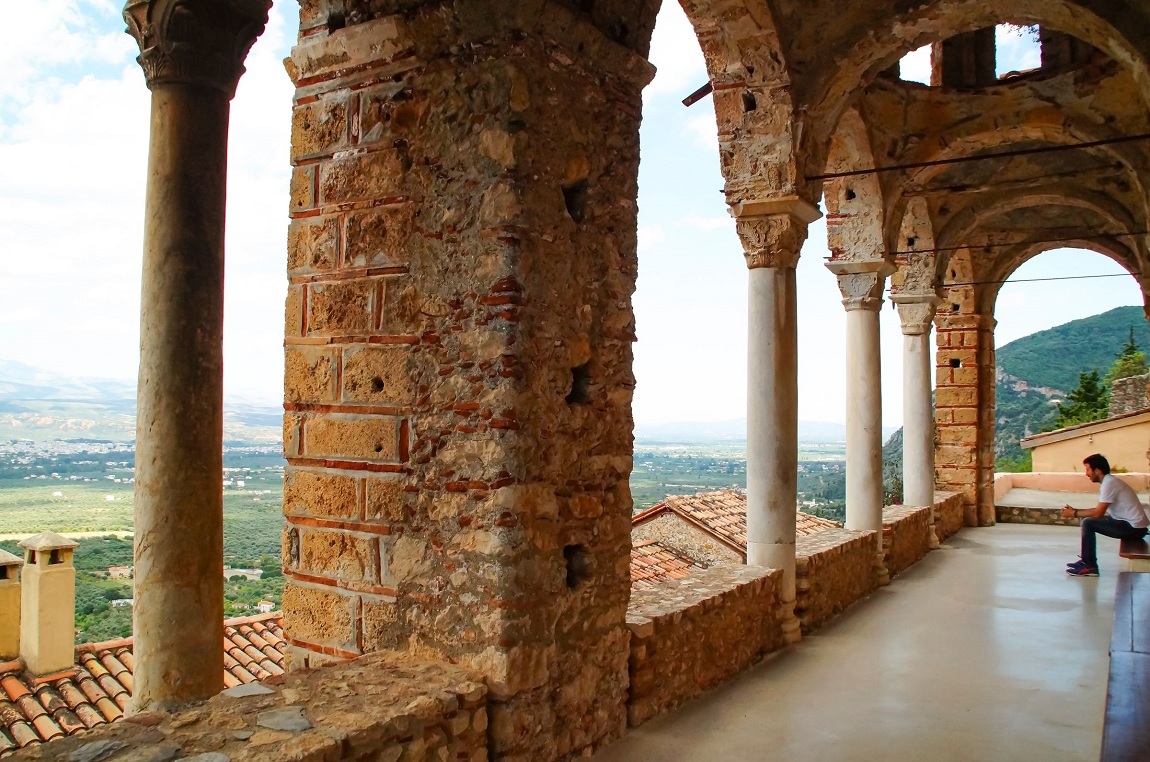
Most monasteries and temples, along with some mansions, are concentrated in Kato Chora and are architectural ornaments. Mystras is dominated by seven important Byzantine churches, all catholic monasteries:
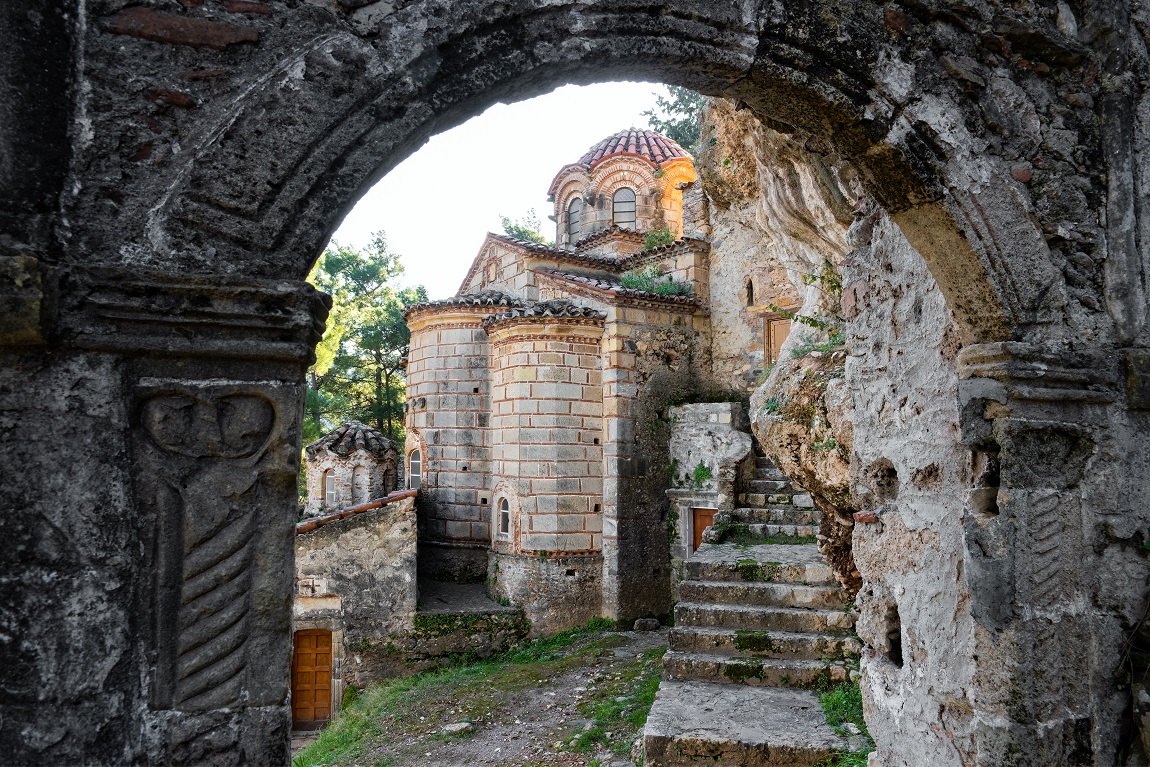
1 . Agios Dimitrios with the basilica with a wooden roof, in the courtyard of which is the metropolitan palace that has been converted into a museum.
2 . The Evangelistria with the characteristic wide narthex.
3 . Agioi Theodoroi, the oldest church of the settlement was erected shortly before 1296 in octagon shape.
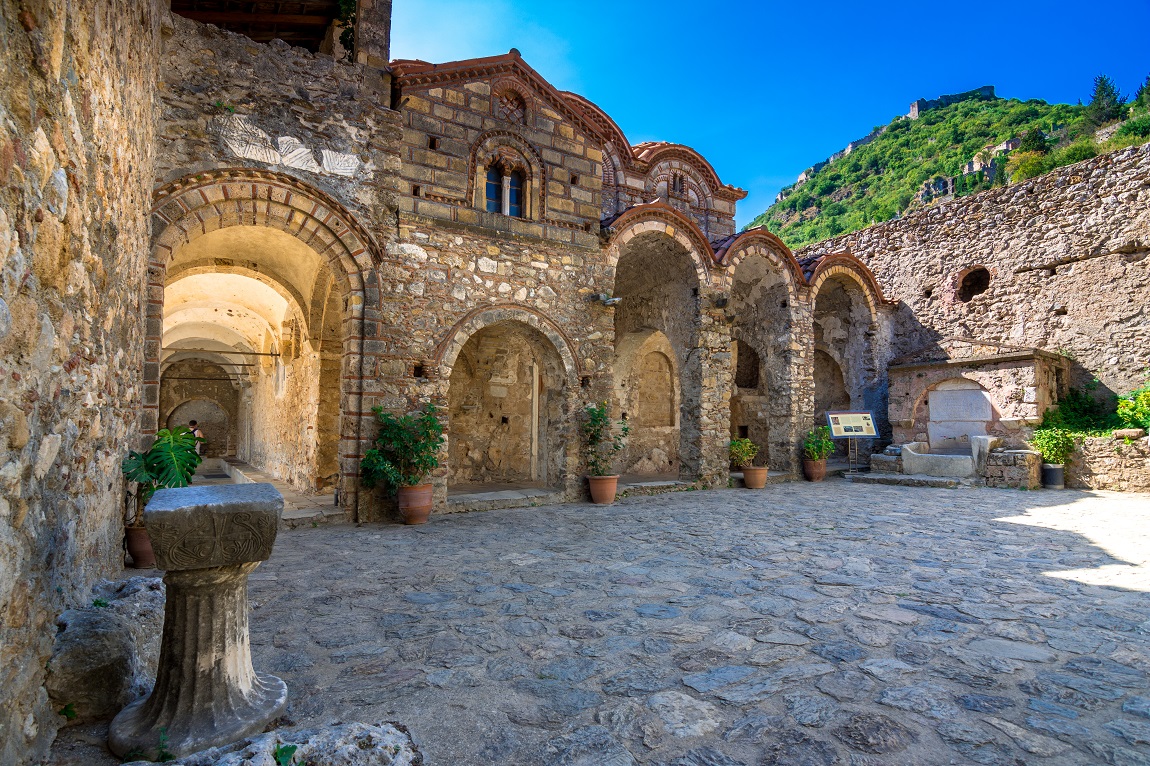
4 . Panagia Odigitria was built with simple stonework by the abbot Pachomios in the early 14th century.
5 . Hagia Sophia, which was the Catholicon of the monastery of Christ the Life-Giver and was probably the church of the Palace.
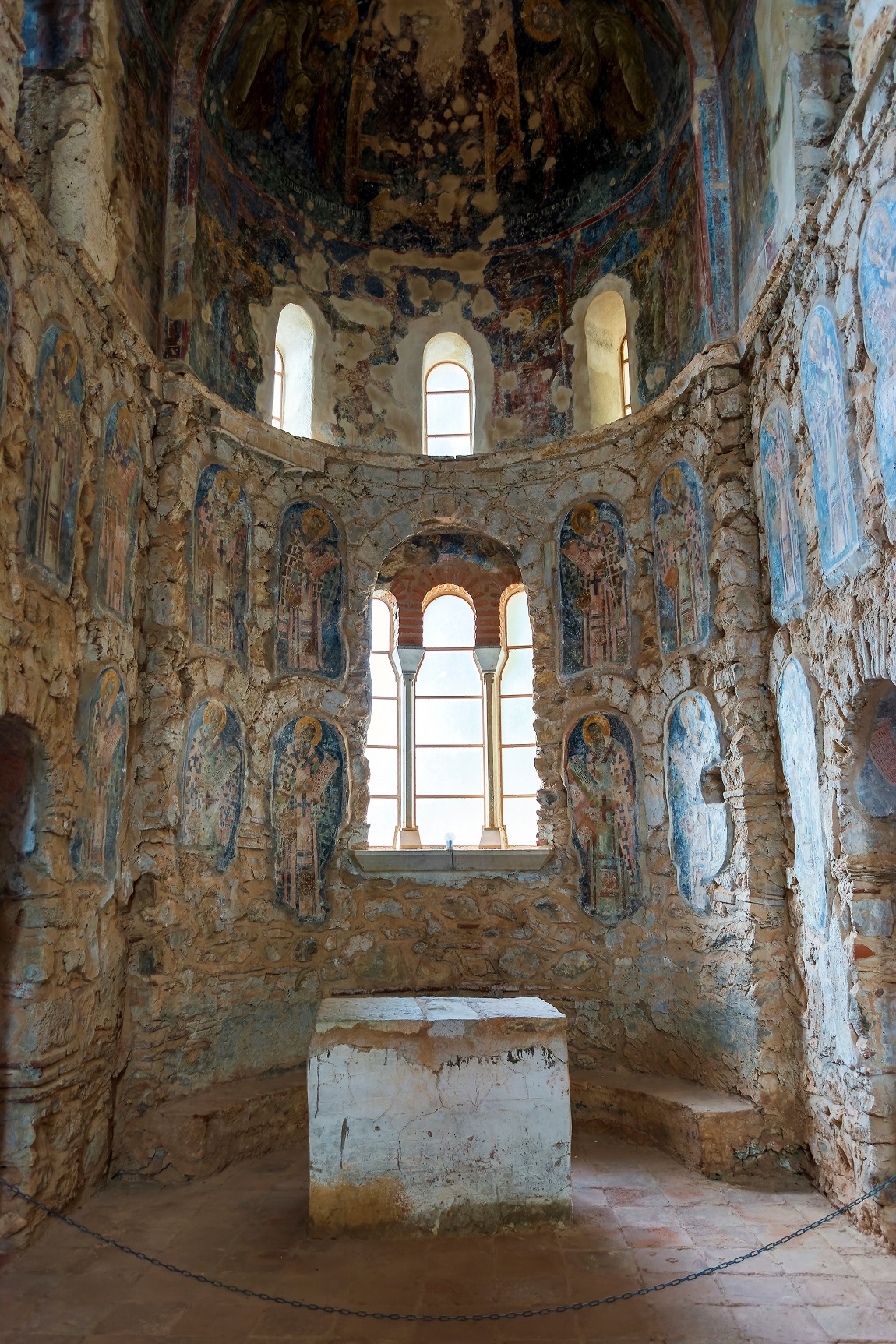
6 . Perivleptos, the Catholicon of the monastery dedicated to the Virgin Mary, was probably built by the first despot of Mystras, Manuel Kantakouzenos in the middle of the 14th century.
7 . Pantanassa, the best-preserved church of all, where the tomb of Theodora, wife of Emperor Constantine XI Palaiologos, is located.
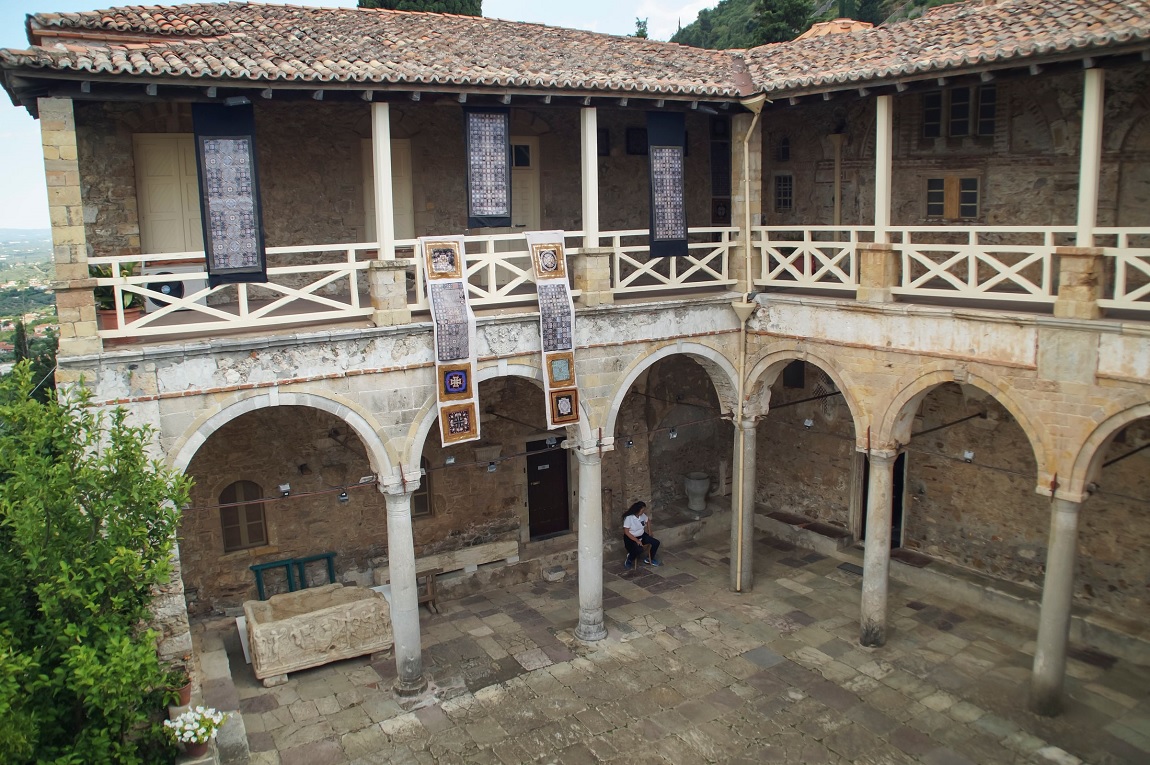
Here is a possible rewritten and amplified text:
The Museum of Mystras, in the yard of Agios Demetriou, was established in 1951. The visitor can see frescoes, portable icons, costume fragments of the Byzantine era, sculptures, architectural elements, jewelry, and handwritten codes that date from the early Christian to the post-Byzantine years. The most remarkable exhibit is a silk women’s dress and a strand of hair from a tomb found in the church of Hagia Sophia.
The walk in the castle city of Mystras takes you back in time. The area has been deserted for a long time – except for the nuns of Pantanassa. However, as you walk on the paths, you feel the presence of the people who lived their whole lives there centuries ago, you “hear” with your imagination the divine services and “see” the daily life of the people who mainly wanted to live safely behind the walls that resisted the invaders and praised God.
Learn more: realsparta.gr

Travel to Greece – Google News – Follow us
Kokkala at Mani: A postcard-like village with serene beaches
Kosmas: A beautiful balcony in mount Parnonas
Sparta island: The unknown island of Greece and its relationship with Onassis
Follow exploringgreece.tv on Instagram and Facebook
Exterior photo source: realsparta.gr


